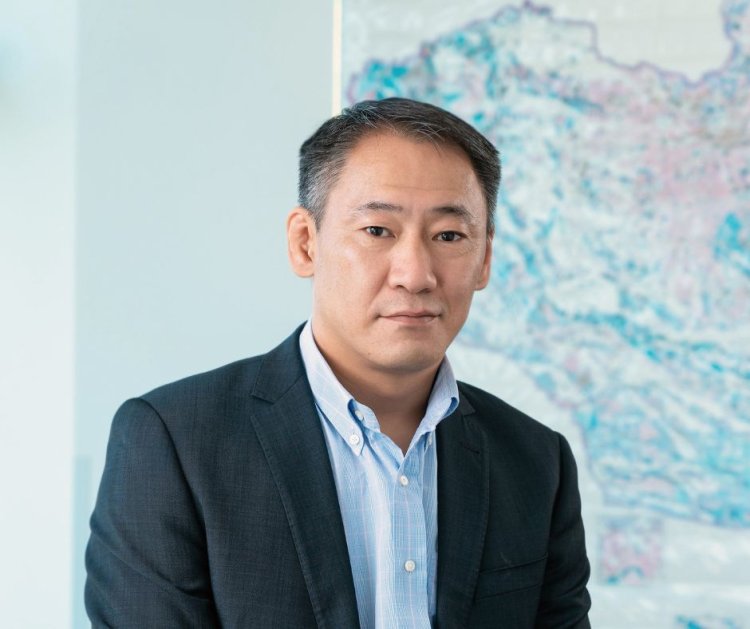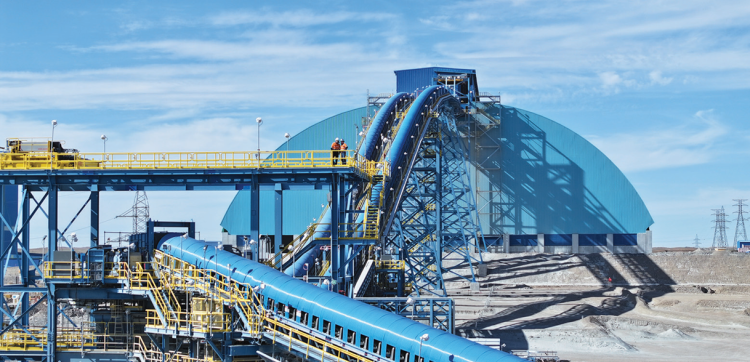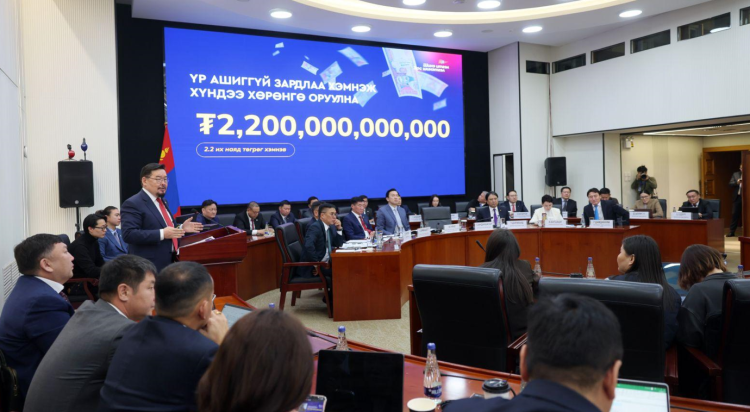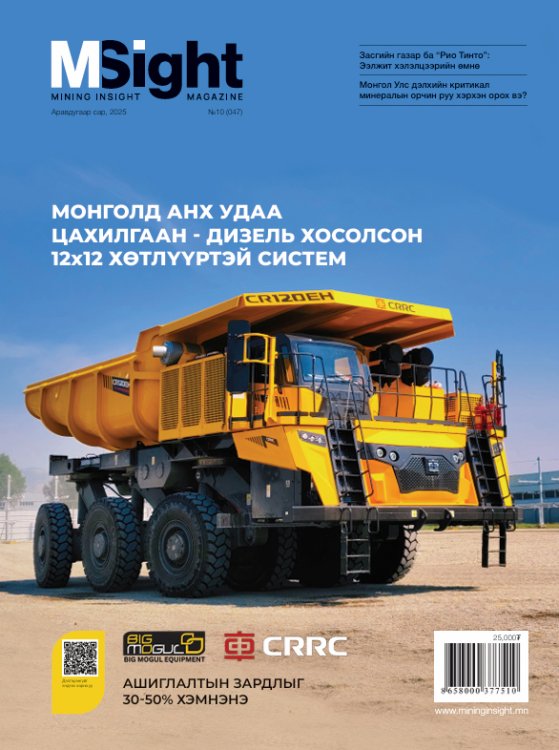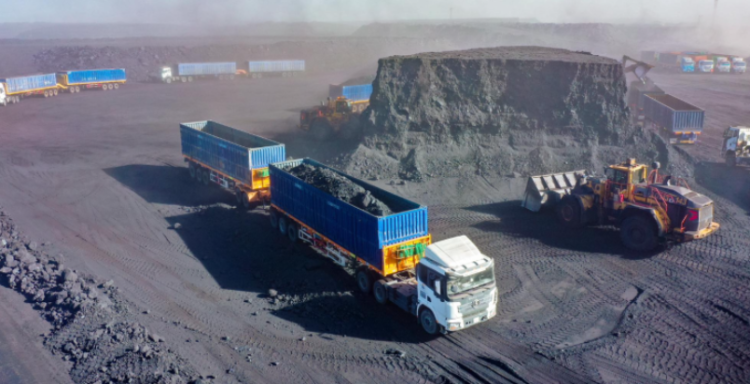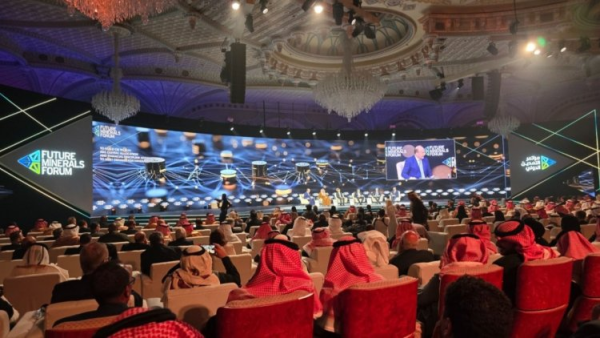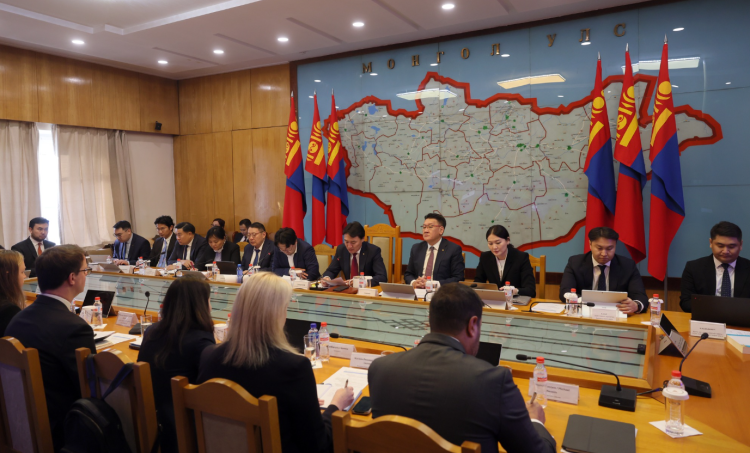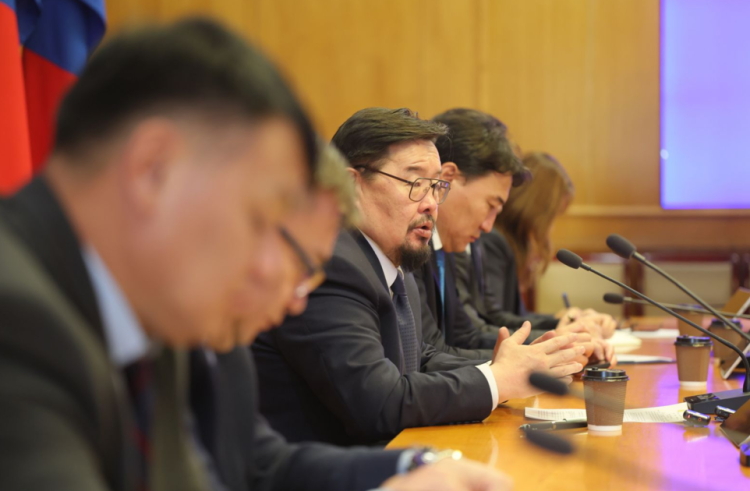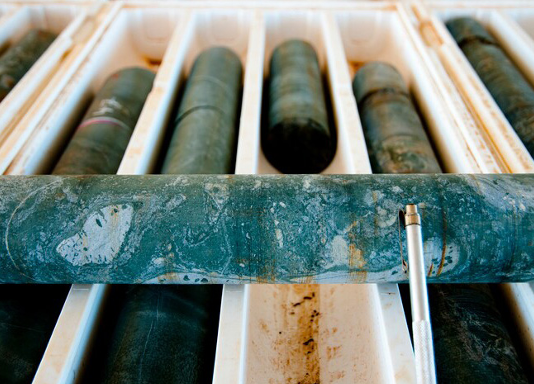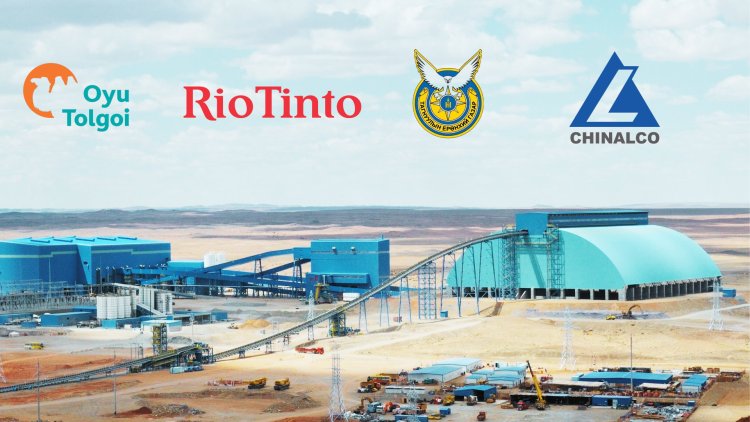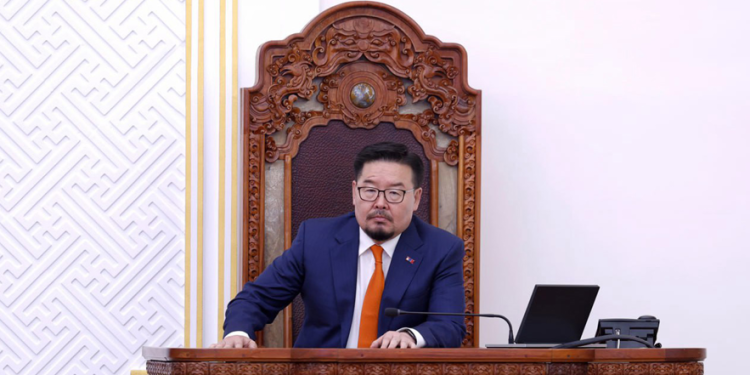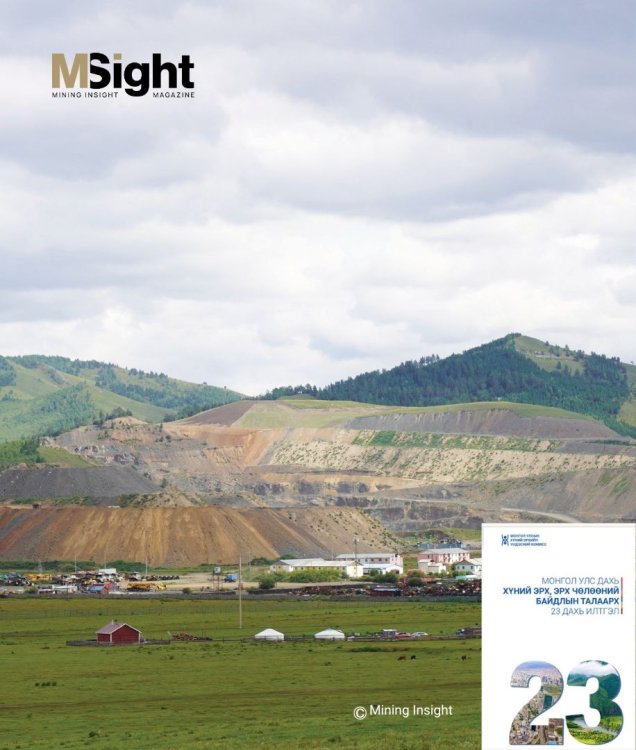 Mining Insight’s E. Misheel interviewed M. Dagva, the president of the Mongolian Critical Mineral Association, about issues surrounding mining, the economy, and critical minerals. He is also a member of the Policy Council of Mining Insight magazine.
Mining Insight’s E. Misheel interviewed M. Dagva, the president of the Mongolian Critical Mineral Association, about issues surrounding mining, the economy, and critical minerals. He is also a member of the Policy Council of Mining Insight magazine.
Тhere has been a lot of talk about diversifying the economy and exporting new products in the mining sector for many years. However, with the price of coal dropping and international research organizations predicting that it won’t increase further, it seems that our country needs to boldly address and plan for diversifying the mining industry with new exports. What are your thoughts on this?
I agree. Diversifying the economy, especially the mining sector, seems to be a time-consuming task. When we talk about creating a sector that could replace and surpass coal, we are talking about billions of dollars in new industries. In the next few years, this could amount to USD 3-4 billion, with projections of USD 5-6 billion by the 2030s, and eventually creating a sector with USD 10 billion in revenue. Achieving this requires long-term, systematic efforts. The reason I say this is because when attracting investments, addressing exploration, extraction, production, transport, and infrastructure, it will take 10-15 years, maybe even longer. If we had started focusing on critical minerals back in 2015, when energy transition was first discussed, we would likely be reaping the benefits today. If we start now, we will see results around 2040, and if we delay until the mid-2030s, the results might not come until 2045 or even 2050. Diversifying the mining sector requires time.
What are your thoughts on the projects such as the Zuuvch-Ovoo uranium and Khalzanburgetei rare earth element projects, which could potentially come into operation in the near future? Do you see this as the beginning of diversification in our mineral sector?
I’m generally happy when a new project is launched, and when Mongolia’s name is mentioned more in business sectors, it’s like a “fresh blood” being infused into the market. However, rather than being content with the start of scattered deposits, I now think it would be more beneficial for our country if multiple mines in the same sector are developed, creating a cluster in that area. For example, if several uranium mines together can generate USD 1 billion in sales annually, the technology, human resources, supply chain capacity, market position, and profits Mongolia would gain from that would be at a much higher level than from a single project just getting off the ground. The same applies to rare earth elements. While a single mine can be opened and operated, the benefits will be limited to a few surrounding areas. On the other hand, if we can create a rare earth cluster generating revenues exceeding a billion dollars, it would involve not only mining but also processing and refining, elevating us into mid-level industries, linking us with the industrial sectors of developed countries. In order to establish a critical minerals sector to replace the coal industry, which is diminishing due to the energy transition, we must think and plan beyond just opening a single mine. We need to develop a cluster that involves mining, processing, and manufacturing intermediate products. This is the scale at which we need to work in order to generate billions of dollars in revenue and contribute to the future of Mongolia’s economy.
There has been a strong argument to shift away from the concept of “strategic deposits” and define “strategic minerals” instead. On the other hand, there are perspectives that consider certain minerals as “strategic minerals.” Should we treat strategic minerals and critical minerals separately?
The terms “strategic deposits,” “strategic minerals,” and “critical minerals” each come with their own challenges and issues. The key question is whether to mix them up or clearly distinguish between them. I want to emphasize three crucial points here: the past, the present, and the future. Looking at the past, we see over 30 years of accumulated issues, including ownership, society, and the environment. If these issues are left unresolved, they may cling to us like a weight on our feet, making our progress even more difficult. In the present, the focus should be on using the sovereign wealth fund to direct mineral export revenues towards national development and the well being of future generations. As for the future, the emphasis is on critical minerals. The discussion around strategic deposits has been ongoing. The initial two main concepts were as follows: one concerns how to resolve ownership in deposits where the government has carried out exploration with state funds over the past 50-60 years, and the second concerns how to maintain control and maximize returns from large-scale deposits once they are in production. Looking at the current developments, it seems that one or possibly two more angles have been added to this initial framework. These include addressing whether wealth distribution is fair when it comes to large-scale mining projects and how to limit the political influence that these projects might exert. Upon analyzing these issues, we could conclude that if the government continues to explore using budget funds, the first concept could remain valid. Although some argue that exploration is a high-risk activity and should not be funded with state money, we can see examples like Saudi Arabia, where state owned companies hold licenses and involve private companies in exploration. Regarding other matters, there are plenty of models worldwide where solutions are found without necessarily involving state ownership. The attention of state authorities, decision-makers, and policymakers should be directed toward two key issues.
First, to develop the critical minerals sector, it is necessary to conduct exploration worth at least USD 100 million, or possibly USD 400–500 million annually, across the territory of Mongolia.
Can the state budget alone support this? If not, domestic private and foreign investment must be allowed into this space, and this door must be opened without delay. Second, if the issues surrounding strategic deposits and the Sovereign Wealth Fund can be resolved within one or two months, urgent decisions must be made and these matters should be concluded. If long-term solutions are required, then yesterday’s and today’s issues must be decisively separated from those of today and tomorrow. The issue of strategic deposits raised in 2007 has dragged on for 20 years, and during this time has negatively impacted Mongolia’s competitiveness in the international mineral sector. Recently, the issue of whether deposits discovered through private investment should be classified as strategic deposits has emerged. The concept of accumulating wealth in the Sovereign Wealth Fund is correct and holds significant importance. While the sovereign wealth funds of the previous century were built upon oil revenues, in the coming century, with the shift toward energy based on metals and minerals, wealth funds based on revenues from solid minerals are expected to become dominant. The key factor in ensuring the success of Mongolia’s Sovereign Wealth Fund is choosing a smart and forward-looking mechanism for revenue generation. The currently discussed option of generating the Fund’s revenue through the state’s equity participation in each major mineral project and collecting dividends from it may not be a sustainable option in the long term. I believe a more stable option would be one that considers the interests and capital-raising schemes of both foreign and domestic private sectors, especially in regard to the investment required to discover new deposits in the future. Now is the time to compare: which is more important—the revenue generated by a few deposits ready for exploitation or those set to enter production soon, or the long-term and continuous revenue from newly discovered deposits? A special royalty paid directly to the Sovereign Wealth Fund from privately developed deposits is sounding like a more favorable alternative. Given the uncertain future of coal and its increasingly distant market for our country, it is imperative that we accelerate such decisions.
The trade war between the United States and the People’s Republic of China seems likely to persist. How is such a situation between the two countries expected to affect Mongolia’s mineral exports? What can we do?
Mongolian people are observing the impact based on two premises. One is that the trade war will slow down China’s economy. Consequently, steel production will decline, which will then lead to a decrease in coal consumption. The other perspective is that China may impose sanctions on the United States through critical minerals, which could result in a rise in global rare earth element prices. Both scenarios are plausible and have a high probability of occurrence. What I have observed is that the United States, through tariffs, has been limiting the entry of Chinese products into its domestic market. Conversely, by imposing tariffs in response, China has also contributed to this trade conflict unfolding within the territories of both countries. Furthermore, as the U.S. and Chinese markets are dependent on other countries and continents, industries are beginning to relocate accordingly. China has already made significant investments in Africa and has started building steel factories there. If steel production shifts to Africa, China’s domestic steel output is likely to decrease, as supply from a closer location in Africa would become viable. As a result, China will have less need to maintain production domestically and may instead focus on building capacity in its strategic influence zones. This, in turn, would negatively impact our major export products. One of the key risks facing the development of the critical minerals sector in Mongolia is geopolitical— linked to the confrontation between Russia and the United States. Most critical minerals are currently processed in China. If our products are to be processed in China, then we will inevitably be exporting into China’s sphere of influence. If we aim to export to the U.S., we must find ways to bypass China. The trade war is creating increasingly complex conditions. It appears that the trade conflict will be prolonged and persistent. The main reason is that, even when the U.S. president changes, the stance toward China does not. Despite the two major political parties in the U.S. having differing views on many issues, they are united on the issue of confrontation with China. Therefore, I believe that this stance will not change even under a new administration after Donald Trump.
How will D. Trump’s coal-supporting act affect Mongolia’s export prospects and international coal prices?
It appears that this decision is primarily aimed at influencing domestic coal production in the United States. Currently, the European Union and other countries have not withdrawn from their goals to reduce carbon emissions. The process seems irreversible. Notably, a technological competition is unfolding behind the green transition — a race to lead in green technologies. While the United States initially led the electric vehicle market, China has now taken the lead. China is capable of producing batteries at low cost, fully processing all raw materials for batteries domestically, and manufacturing high-quality vehicle components. It has emerged as a leader in the energy transition, including in solar and wind energy. Although the U.S. may resume coal extraction, it is unlikely to risk falling behind in green technologies. Within the next four years, it is quite possible that the country will re-enter the green technology race. Therefore, I do not believe that D. Trump’s support for coal will have a positive effect on Mongolia. However, there is an interesting angle. Despite China’s dominance in green technologies, the country’s energy demand is growing by approximately 2 percent annually over the next 5–6 years. This level of demand cannot be met by renewable or nuclear energy alone. In the short term, there appears to be a market for Mongolia’s thermal coal. Given the current decline in coking coal prices, Mongolia may have a short-term opportunity to develop thermal coal exports.
India is likely to become a major coal importer in the future. Mongolia has conducted several pilot shipments to India. Is it possible for India to become another coal importer for us?
The possibility is very low. Transporting coal to India via China is not an option. The only feasible route would be through Russia. India’s requirement is to receive coal at a competitive price at ports such as Vladivostok. For Mongolian coal to reach such ports, it would have to cross the border at a very low cost— around USD 10–20 per tonne. At present, there are no license holders in Mongolia capable of mining coal at such low costs, producing at high volumes, and operating under a viable business model that allows for reasonable profit margins. Unless someone is willing to settle for a profit of merely 10–20 cents per ton, it is unlikely that Mongolian coal will be exported to India via Russia.
Amendments to the Minerals Law seem to have gone quiet. In general, what are mining sector stakeholders expecting from the legal changes?
There are no significant expectations from the sector regarding the amendments to the Minerals Law. Among geologists, there is hope that the revised law will reintroduce the issuance of exploration licenses through applications. Among a few copper project holders, there is an expectation that the increased royalties introduced in the law will be reduced to a more reasonable level. Other than that, there is little sign of anticipation in the sector—which is somewhat disappointing. Personally, I believe that beyond just the Minerals Law, several reform-oriented measures should be implemented to ensure the long-term, stable growth of state revenue from the mineral resources sector. First, the vague concept of “strategic deposits” should be clarified. It should be clearly stated whether the term will apply to future deposits, in a way that avoids disputes and eliminates room for populist interpretations. Second, it would be beneficial to establish a centralized, digital, and open-access geological data system at the national level to support investment and regional development. Third, the issue of sudden increases in royalty rates must be addressed. Clear, consistent regulations need to be established from the outset to ensure that exploration investment is not deterred while allowing the state to collect its fair share of revenue. A balanced mechanism should be introduced that can operate consistently for 20 to 30 years. Fourth, to promote the development of critical minerals, regulatory frameworks should open the door to the establishment of midstream and downstream processing facilities that utilize mining products for refining and manufacturing. Clear guidelines must be defined for how and at what stage royalties will be applied—whether at the ore level or after value-added processing. Given that critical minerals encompass a wide variety and require the development of numerous small- and medium-scale projects, this needs to be clearly structured from the outset. Lastly, there has been an excessively long delay in establishing financial guarantee mechanisms for mine closure to ensure environmental and social safeguards and improve accountability.
How can domestic and foreign investors, as well as industry players, be supported through other regulations aside from the Mineral Resources Law?
Focusing solely on the mining sector policy seems inadequate. Right now, most of the projects in operation have already found their way within the current legal environment. However, the future of the mining sector is deeply interconnected with the economic security of our country, so it would be more effective to approach this from the perspective of how to ensure national security. More attention should be given to the strategy for managing an economy based on mining. Steps should be taken to reduce over dependence on exports to a single country. The “Vision 2050” document indirectly mentions that the mining sector will generate USD 20-30 billion in revenue annually. It is important to think about how to achieve that. It is evident that the alignment of the goals to increase mining sector exports in the government’s program and medium-term policies is weak. Short term policies, especially those based on state-owned and state-participated mining companies, are being implemented to fill the national budget, but long-term policies are being neglected. Particularly, the future of coal, which contributes most to the national budget, is uncertain in the medium to long term. On the coal sector strategy, Mongolia should employ experts and international consultants to clarify several points. In the next 20-30 years, we need to determine how Mongolia can maximize income from the shrinking coal market and exit this business with minimal losses. Additionally, it is crucial to define how alternative export sectors to replace coal will be developed during this period. If we continue to work incorrectly in a shrinking market, opening numerous mines for 1-2 years’ worth of demand, only to leave behind massive environmental damage, or if entrepreneurs purchase coal transport trucks and equipment but fail to make a profit and go bankrupt, there is a significant risk of the assets of Mongolia and its citizens becoming worthless. These are just a few of the many things we need to consider and address. If we correctly understand the future of coal, we will realize the economic risks our country faces. If we can see this clearly, we can transition into critical minerals properly. Copper is part of critical minerals. If a strong copper strategy is implemented, it could become a major sector to replace coal. In the past three years, copper has become critical, having been included in the list of critical minerals in several leading countries, and is recognized as one of the key raw materials for a “green economy.” Among Mongolia’s critical minerals, copper is currently being mined and sold, with future large deposits expected to open, making it one of the most valuable metals with the potential to develop into a multi-billion-dollar sector. Copper is also attracting the interest of both domestic and foreign investors as part of the critical minerals. In the copper sector, the leading challenge to attracting investment in exploration is the increasing royalty rates, and addressing this regulation is a top priority. In addition to increasing copper extraction and exploration, we should work on creating clusters that produce semi-finished products using copper, and focus on exporting copper in various forms, not just as concentrate, to multiple markets.
Several companies are successfully conducting drilling for coalbed methane gas. To what extent could methane gas expand our export opportunities?
On the international front, there are parties interested in recognizing natural gas as a transitional energy source in the shift towards clean energy. If this consensus is formed, there could be a 15-20 year business opportunity and environment. However, the model used by Russia, which involves discovering large natural gas fields and laying pipelines for mega investments to export across continents, may not be suitable for coalbed methane gas. For the eastern states of Australia, we have observed a model where gas from coal mines is collected, liquefied at sea ports, and then exported by ship. The question of which model we should adopt and how to achieve success with it is highly interesting. If one of the companies currently woсory frameworks should open the door to the establishment of midstream and downstream processing facilities that utilize mining products for refining and manufacturing. Clear guidelines must be defined for how and at what stage royalties will be applied—whether at the ore level or after value-added processing. Given that critical minerals encompass a wide variety and require the development of numerous small- and medium-scale projects, this needs to be clearly structured from the outset. Lastly, there has been an excessively long delay in establishing financial guarantee mechanisms for mine closure to ensure environmental and social safeguards and improve accountability.
How can domestic and foreign investors, as well as industry players, be supported through other regulations aside from the Mineral Resources Law?
Focusing solely on the mining sector policy seems inadequate. Right now, most of the projects in operation have already found their way within the current legal environment. However, the future of the mining sector is deeply interconnected with the economic security of our country, so it would be more effective to approach this from the perspective of how to ensure national security. More attention should be given to the strategy for managing an economy based on mining. Steps should be taken to reduce over dependence on exports to a single country. The “Vision 2050” document indirectly mentions that the mining sector will generate USD 20-30 billion in revenue annually. It is important to think about how to achieve that. It is evident that the alignment of the goals to increase mining sector exports in the government’s program and medium-term policies is weak. Short term policies, especially those based on state-owned and state-participated mining companies, are being implemented to fill the national budget, but long-term policies are being neglected. Particularly, the future of coal, which contributes most to the national budget, is uncertain in the medium to long term. On the coal sector strategy, Mongolia should employ experts and international consultants to clarify several points. In the next 20-30 years, we need to determine how Mongolia can maximize income from the shrinking coal market and exit this business with minimal losses. Additionally, it is crucial to define how alternative export sectors to replace coal will be developed during this period. If we continue to work incorrectly in a shrinking market, opening numerous mines for 1-2 years’ worth of demand, only to leave behind massive environmental damage, or if entrepreneurs purchase coal transport trucks and equipment but fail to make a profit and go bankrupt, there is a significant risk of the assets of Mongolia and its citizens becoming worthless. These are just a few of the many things we need to consider and address. If we correctly understand the future of coal, we will realize the economic risks our country faces. If we can see this clearly, we can transition into critical minerals properly. Copper is part of critical minerals. If a strong copper strategy is implemented, it could become a major sector to replace coal. In the past three years, copper has become critical, having been included in the list of critical minerals in several leading countries, and is recognized as one of the key raw materials for a “green economy.” Among Mongolia’s critical minerals, copper is currently being mined and sold, with future large deposits expected to open, making it one of the most valuable metals with the potential to develop into a multi-billion-dollar sector. Copper is also attracting the interest of both domestic and foreign investors as part of the critical minerals. In the copper sector, the leading challenge to attracting investment in exploration is the increasing royalty rates, and addressing this regulation is a top priority. In addition to increasing copper extraction and exploration, we should work on creating clusters that produce semi-finished products using copper, and focus on exporting copper in various forms, not just as concentrate, to multiple markets.
Several companies are successfully conducting drilling for coalbed methane gas. To what extent could methane gas expand our export opportunities?
On the international front, there are parties interested in recognizing natural gas as a transitional energy source in the shift towards clean energy. If this consensus is formed, there could be a 15-20 year business opportunity and environment. However, the model used by Russia, which involves discovering large natural gas fields and laying pipelines for mega investments to export across continents, may not be suitable for coalbed methane gas. For the eastern states of Australia, we have observed a model where gas from coal mines is collected, liquefied at sea ports, and then exported by ship. The question of which model we should adopt and how to achieve success with it is highly interesting. If one of the companies currently working with coalbed methane gas leads the market and starts exporting, it could trigger a “boom” in the industry.
Thank you for the conversation.












